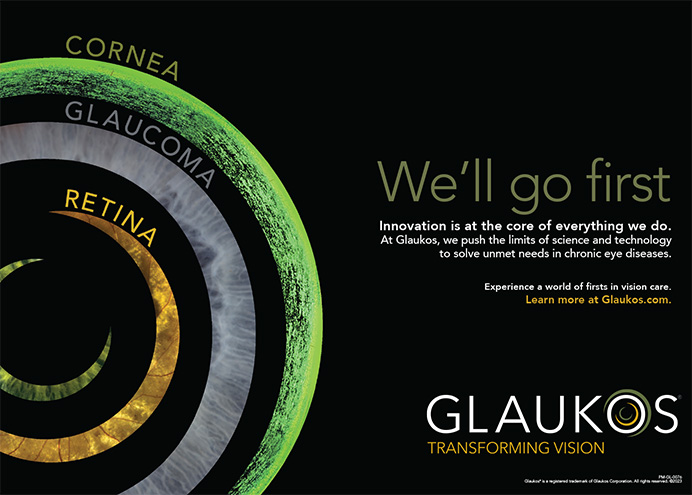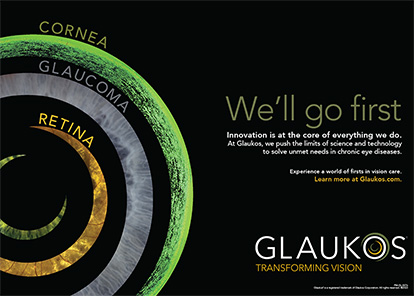The average human cornea contains a certain amount of positive spherical aberration.1,2 Because spherical IOLs also have positive spherical aberration, implanting them in the eye increases the degree of this higher-order aberration in the optical system. This fact suggests that implanting IOLs with one or more negatively aspheric surfaces (aspheric IOLs)3-8 will benefit patients by neutralizing the natural spherical aberrations of their corneas. At minimum, aspheric IOLs should not induce additional positive spherical aberration. The decentration of an implanted aspheric IOL, however, may overshadow the lens' apparent benefits by inducing coma or reducing modulation transfer.1,3,9
This article presents the results of a study in which we measured the effect of decentration on the performance of aspheric IOLs.
METHOD
We used a commercial optical engineering program from Zemax Development Corporation (Bellevue, WA) to perform optical ray tracing and analysis of aspheric schematic eye models and IOL models based on the parameters described by Altmann et al.3
The schematic eye model was fixed to 5mm, which is the midrange of the pupil's diameter for 60-year-old subjects over various lighting conditions. The 22.00D IOL models had positive, negative, and zero spherical aberration, and the decentration values used in the study were zero (on axis), 0.5, and 1.0mm.
For each of the three IOL models, we determined the corneal asphericity (K-value) needed to optimize the eye model and produced three corneal shapes that matched the IOLs' apical radii of curvature. Table 1 lists the optimized corneal models and their corresponding spherical aberrations. It is unlikely that a natural cornea would have -0.2374?m2 of spherical aberration, but the model was useful for the present analysis.
For each of the three corneal shapes, we substituted one of the IOL models (on axis) and optimized the distance to the retina for best focus. We then obtained the modulation transfer functions and Zernike aberrations for the three values of decentration using 512 X512 rays.
RESULTS
Figures 1, 2, and 3 show the modulation transfer functions for the decentration values of zero, 0.5, and 1.0mm imposed on model corneas with negative, positive, and zero spherical aberration, respectively.
The Zernike aberrations for spherical aberration (Z[4,0]), astigmatism (Z[2,2]), and coma (Z[-1,3]) are listed in Tables 2, 3 and 4. Because the decentration of the IOLs was performed only in the y direction, the other terms for astigmatism and coma were zero.
DISCUSSION
We can make several observations about the optical performance of the IOLs as a function of the corneal shape and the amount of decentration of the IOL. Maintaining minimal decentration (less than 0.5mm) and matching the IOL to the amount of corneal spherical aberration will provide the best optical performance. For misalignments of 0.5mm or more, the IOL with zero spherical aberration (Sofport AO; Bausch & Lomb, Rochester, NY) provides better visual quality than the spherical (Soflex; Bausch & Lomb) or the aspheric (Tecnis; Advanced Medical Optics, Santa Ana, CA) IOL.
All three IOLs appear to perform about the same in terms of ocular spherical aberration as a function of decentration (Table 2). The IOLs produce approximately the same level of ocular spherical aberration in the resulting eye model when each of them is decentered. The IOL with zero spherical aberration appears to cause slightly less total ocular spherical aberration only because it is optimized for the central range of the corneas under consideration. Surprisingly, the astigmatism and coma induced due to decentration is relatively independent of the corneal shape (Tables 3 and 4). Spherical IOLs decentered by 0.5 and 1.0mm induced 14 to 25 times more coma and astigmatism than similarly decentered IOLs with zero spherical aberration. IOLs with negative spherical aberration induced even higher degrees of coma and astigmatism versus IOLs with zero spherical aberration (23 to 50 times as much) when both were decentered by 0.5 and 1.0mm.
Although a more thorough optical analysis of the IOLs' decentration would include the effects of tilt, defocus, and polychromatic changes, we can draw the following generalizations from our study.
First, IOLs should be selected as a function of the corneal spherical aberration and anticipated decentration for best performance. Second, the modulation transfer function of IOLs with zero spherical aberration is not affected by zero to 1.0mm of decentration. Third, the modulation transfer function of spherical and aspheric IOLs is adversely affected by 0.5 to 1.0mm of decentration. Finally, IOLs with zero spherical aberration induce less coma and astigmatism if they decenter than IOLs with positive and negative spherical aberration.
CONCLUSION
Our study shows how the decentration of an aspheric IOL causes ocular aberrations and demonstrates that the magnitude of the induced aberrations is a function of the aspheric IOL.
Douglas D. Koch, MD, is Professor and the Allen, Mosbacher, and Law Chair in Ophthalmology at the Cullen Eye Institute, Baylor College of Medicine, Houston. He is a paid consultant for Advanced Medical Optics, Inc., and for Alcon Laboratories, Inc. Dr. Koch may be reached at (713) 798-6443; dkoch@bcm.tmc.edu.
Edwin J. Sarver, PhD, is President of Sarver and Associates, Inc., in Carbondale, Illinois. He is a paid consultant for STARR Surgical Company, Eyeonics, Inc., and Lenstec, Inc. Dr. Sarver may be reached at (618) 529-4225; ejsarver@aol.com.
Li Wang, MD, PhD, is Research Associate in Ophthalmology at the Cullen Eye Institute of the Baylor College of Medicine in Houston. She acknowledged no financial interest in the products or companies mentioned herein. Dr. Wang may be reached at (713) 798-7946; liw@bmc.tmc.edu.


